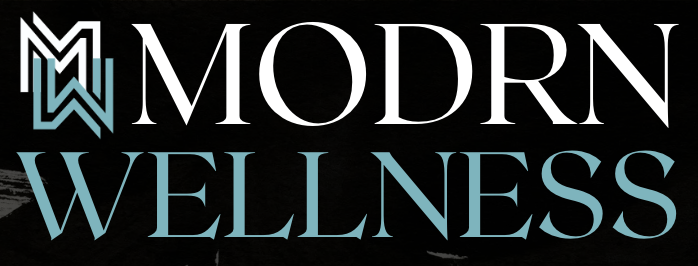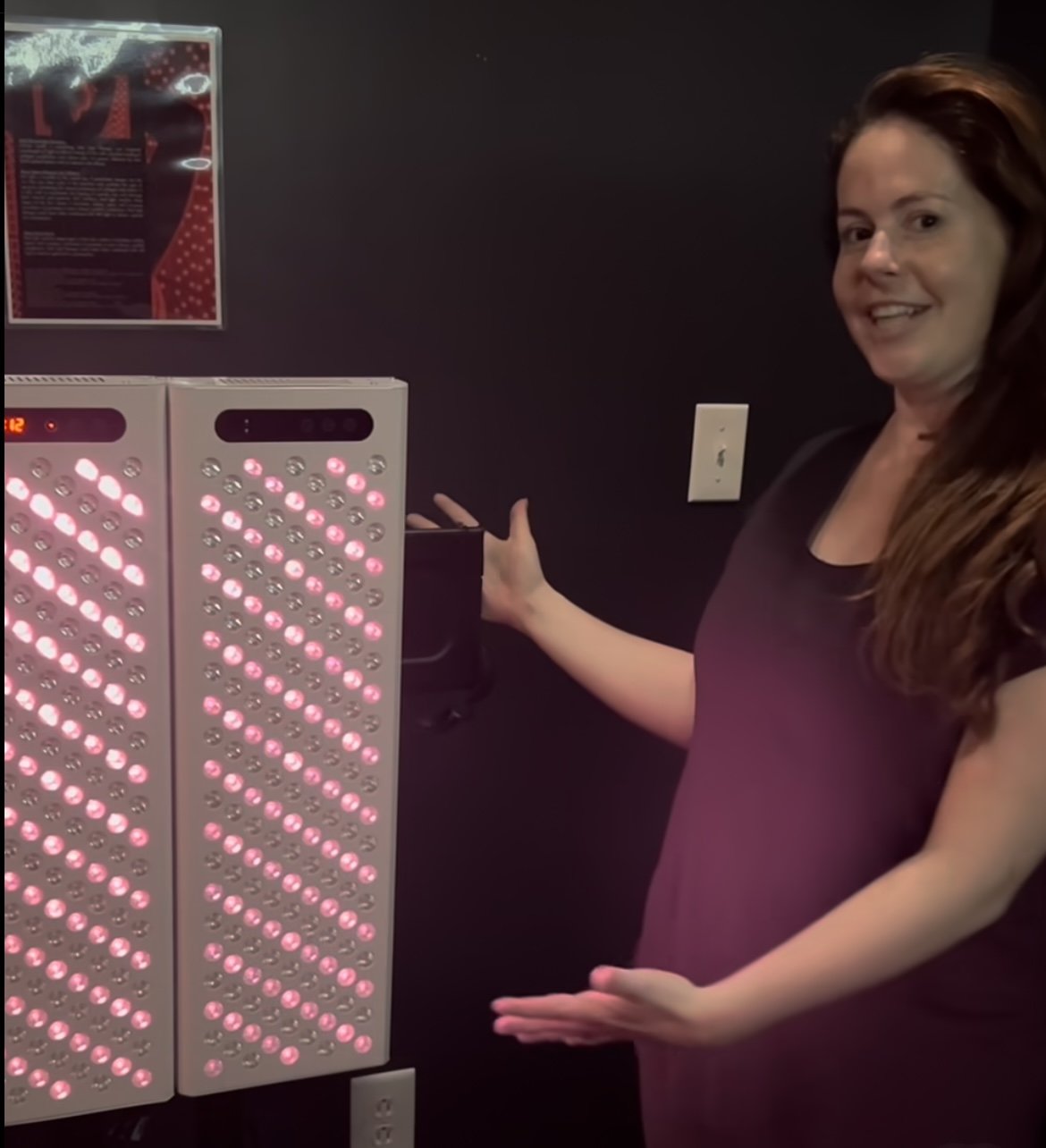What is red light therapy?
The Modrn red light panel is a device designed to emit red and near-infrared light therapy. Light therapy, also known as photobiomodulation or low-level light therapy (LLLT), involves using specific wavelengths of light to stimulate cellular function and promote various health benefits.
The Modrn red light panel consists of high-quality LED lights that emit red (wavelength around 660 nanometers) and near-infrared (wavelength around 850 nanometers) light. These specific wavelengths of light penetrate the skin and reach the cells, where they are believed to trigger a range of positive biological responses.
Red light therapy has been studied for its potential benefits in various areas, including skin health, wound healing, pain management, muscle recovery, joint health, and general well-being. Near-infrared light is thought to have similar effects and can also penetrate deeper into tissues, making it beneficial for deeper muscle recovery, reducing inflammation, and supporting cellular metabolism.
All in all, we are a big fan of the treatment.
Let’s Discuss the two different energies emitted!
The wavelength of 660 nanometers can have several beneficial effects.
Skin Rejuvenation: Red light therapy, using wavelengths around 660 nm, is commonly employed in skincare and beauty treatments. It can penetrate the skin at a deeper level, promoting collagen production and enhancing skin elasticity. This can help reduce the appearance of wrinkles, fine lines, and blemishes, resulting in a more youthful and radiant complexion.
Improved Blood Circulation: Red light at 660 nm can stimulate blood circulation in the targeted areas when applied through techniques like laser therapy or LED light therapy. This enhanced circulation can aid in delivering more oxygen and nutrients to the skin, promoting a healthier complexion and contributing to a vibrant appearance.
Hair Growth Stimulation: Low-level laser therapy using red light at approximately 660 nm has been explored for its potential to stimulate hair growth. It is believed to promote blood flow to the hair follicles, leading to improved nutrient delivery and encouraging the growth of thicker, healthier hair.
Mood Enhancement: Light in the red spectrum has been associated with feelings of relaxation and calmness. Incorporating soft red light in wellness spaces, such as meditation rooms or relaxation areas, can create a soothing ambiance and promote a sense of tranquility, which can contribute to overall well-being.
Improved Sleep Quality: Exposure to bright or blue-rich light in the evening can disrupt our natural sleep-wake cycle. However, using red light in the evening can be less disruptive to sleep as it has less impact on suppressing melatonin, a hormone that regulates sleep.
850nm red light therapy, also known as near-infrared (NIR) therapy, has gained popularity for its potential wellness and beauty benefits. While scientific research on the specific effects of 850nm red light is still ongoing, there are several potential benefits associated with its use.
Skin health: 850nm red light therapy is believed to penetrate deep into the skin, promoting collagen production and improving overall skin health. Increased collagen production can help reduce the appearance of fine lines, wrinkles, and acne scars. It may also improve skin elasticity and firmness.
Pain relief: Red light therapy, including 850nm red light, has shown promise in reducing pain and inflammation. It may be beneficial for conditions such as arthritis, muscle soreness, and joint pain. The light energy is thought to stimulate cellular activity and promote tissue healing, which may help alleviate pain.
Wound healing: Red light therapy has been studied for its potential to accelerate wound healing. It may help promote the formation of new blood vessels, increase circulation, and stimulate the production of collagen and fibroblasts, which are crucial for wound healing processes.
Mood and mental health: Some research suggests that red light therapy, including 850nm light, may have positive effects on mood and mental health. Exposure to red light may stimulate the release of serotonin, a neurotransmitter associated with feelings of well-being. It may also help regulate circadian rhythms and improve sleep quality.
Hair growth: While more research is needed, there is some evidence to suggest that red light therapy may be beneficial for hair growth. It is thought to stimulate hair follicles and improve circulation in the scalp, potentially leading to thicker and healthier hair.
Always consult with a healthcare professional or a qualified expert who can provide personalized advice based on your specific needs and health condition.


